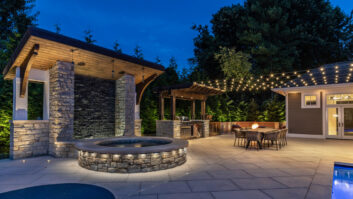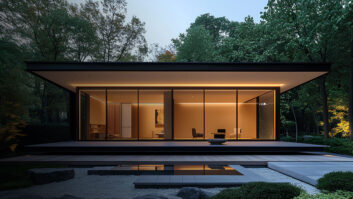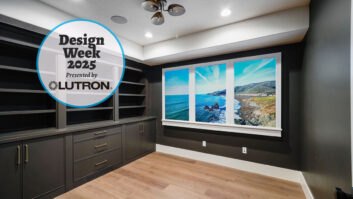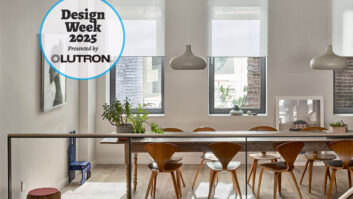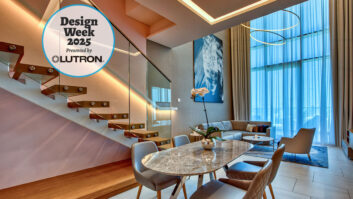by Dave Tkachuk
Ira Friedman’s thoughtful analysis in Residential Systems — “Will You Design or Build?” — got me to thinking. I’m still unsure his prediction that residential systems AV design and installation will go their separate ways is a slam dunk.
The AV design and build business is compared to other “hybrids” like plumbing that matured into separate specialized design and hourly-wage installation businesses. “Soon we will see the acceptance (and advanced stature) of design-only operations,” Friedman writes. “And, to round it out, we will soon see a horde of hourly wage installation-only companies.”
My first response (posted on the website) was that, in our business, designers and installers, even in separate companies, should closely work together and communicate along with engineers, manufacturers, general contractors, and the client to provide “the kind of efficiency and craftsmanship needed and expected.”
So I think it may at least take awhile before design-only AV businesses are accepted and hordes of hourly waged installation-only companies define our industry.
Yes, it’s true the AV business is unique. Comparing our business structure to single-discipline electrical, plumbing and HVAC industries, however, may lead to inaccurate presumptions.
The reality is that AV is much more than just audio and video. It very often includes lighting, shades, environmental control, security, and telephone along with intercom, satellite, and cable distribution, motorization, and automation.
And on top of that we must make all the pieces play nicely together as a single integrated system.
To be successful with all of these components is no easy challenge. It requires a company with years of design and installation experience together with a sales staff, designers/engineers, and installers all working closely together and effectively communicating on each project while speaking a common language.
But what is that language? In fact it is the language of diagrams. Just as the common language of home construction is construction plans, so it is in any other construction, manufacturing, or installation industry – at least those that are the most successful enterprises.
Now wait a second here. Does the AV industry have a common diagram language?
Not really. From what I see, most successful AV integration companies create their own diagramming language and standards. All too often they are driven to reinvent them for each new project.
Diagramming integrated systems can be a frustrating and time-consuming process, yet absolutely necessary nonetheless. I know. I’ve been there, spending more than 15 years reinventing and refining the process by which floor plan, block, schematic, and rack diagrams are easy to create and easy to read.
Residential systems design is not alone. There is a lack of AV standards even in the commercial systems design field. I have yet to see common ground in diagramming from different AV consultant companies. Although the commercial AV industry is further ahead in the documentation and diagramming process than the residential industry, commercial installation companies still struggle to provide meaningful and accurate project diagrams.
As noted in my first response to the “Will You Design or Build?” article, an effort is currently being addressed through the CEA/CEDIA Standards Committee, of which I am a working member. Still it may be years before all the necessary standards are in place.
Before we can consider specialization and the elimination of generalists in the AV systems integration business, as in the other construction trades we need our standards in place to move forward while being on the same page.
There may also be a presumption here that those skilled in AV systems installation may not have the ability to learn AV systems design for residential construction as well. Don’t be so sure. There may be some catching up to do in our industry, yet tools that enable learning design skills may be closer than one might think.
That’s why I worked on developing a new software template (Engineering Complete – A/V) to provide a simple do-it-yourself package for system integrators to design, engineer, diagram, and document integrated electronic systems of any size. People with experience in our industry may well be capable of learning and doing more than might be expected.
But whether all are working under the same roof or not, the quality of communication among all project stakeholders is essential. That can only happen by providing the design, engineering, and installation yourself, or else selecting a design/engineering or installation firm that is willing to work very closely with you.
And until our industry has everything in place to support totally separate design and build firms – as in other construction trades – we all need to continue to support each other’s work through close working relationships and solid communication as our skills continue to evolve.
Residing in Burnham, Maine, Dave Tkachuk is a lifetime AV systems design engineer and the founder of Symbol Logic, provider of design and engineering solutions for integrators.

